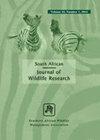Adaptive Governance of Cape Mountain Zebra, Can It Work?
引用次数: 1
Abstract
Adaptive governance and network governance theory provide a useful conceptual framework to guide the conservation of threatened species in complex multi-actor, multijurisdictional social ecological systems. We use principles from this theory to assess strengths and weaknesses in (1) national legislation, and (2) the Convention on International Trade in Endangered Species of Wild Fauna and Flora (CITES) Regulations applicable to the conservation of the Cape mountain zebra (Equus zebra zebra) (CMZ) in South Africa. A legislated conservation tool, Biodiversity Management Plans for Species (BMP-S), establishes a collaborative network of role players and facilitates the important principles of collaborative learning and adaptation. Effective governance of this network is critical to success, but challenging because of a mandate gap and limited capacity in government to provide essential network-level competencies. National regulations governing human use of CMZ (Threatened or Protected Species (TOPS) Regulations) accords with the principles of (1) being developed in consultation with stakeholders and (2) open to revision and adaptation. CITES Regulations also provide adequately for adaptation. Poor alignment of regulations between different regulatory authorities in South Africa and limited capacity for implementation of regulations seriously constrain learning and adaptation.Cape Mountain斑马的适应性治理,能奏效吗?
适应性治理和网络治理理论为指导复杂的多主体、多管辖权的社会生态系统中受威胁物种的保护提供了一个有用的概念框架。我们使用这一理论的原则来评估(1)国家立法和(2)适用于南非开普山斑马保护的《濒危野生动植物种国际贸易公约》(CITES)条例的优势和劣势。一个立法保护工具,物种生物多样性管理计划(BMP-S),建立了一个角色扮演者的合作网络,并促进了合作学习和适应的重要原则。对这一网络的有效治理对成功至关重要,但由于授权差距和政府提供基本网络级能力的能力有限,因此具有挑战性。管理人类使用CMZ(受威胁或受保护物种(TOPS)条例)的国家法规符合以下原则:(1)与利益相关者协商制定;(2)可供修订和适应。《濒危野生动植物种国际贸易公约》条例也对适应作出了充分规定。南非不同监管机构之间的法规协调不力,实施法规的能力有限,严重制约了学习和适应。
本文章由计算机程序翻译,如有差异,请以英文原文为准。
求助全文
约1分钟内获得全文
求助全文

 求助内容:
求助内容: 应助结果提醒方式:
应助结果提醒方式:


